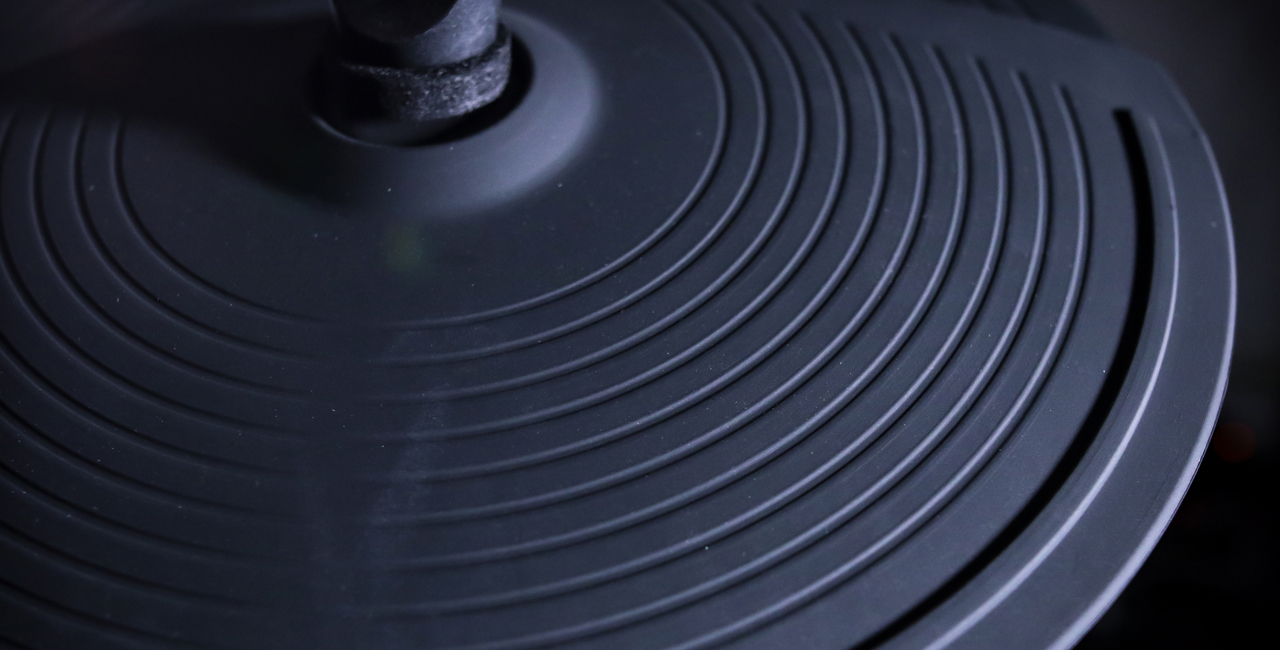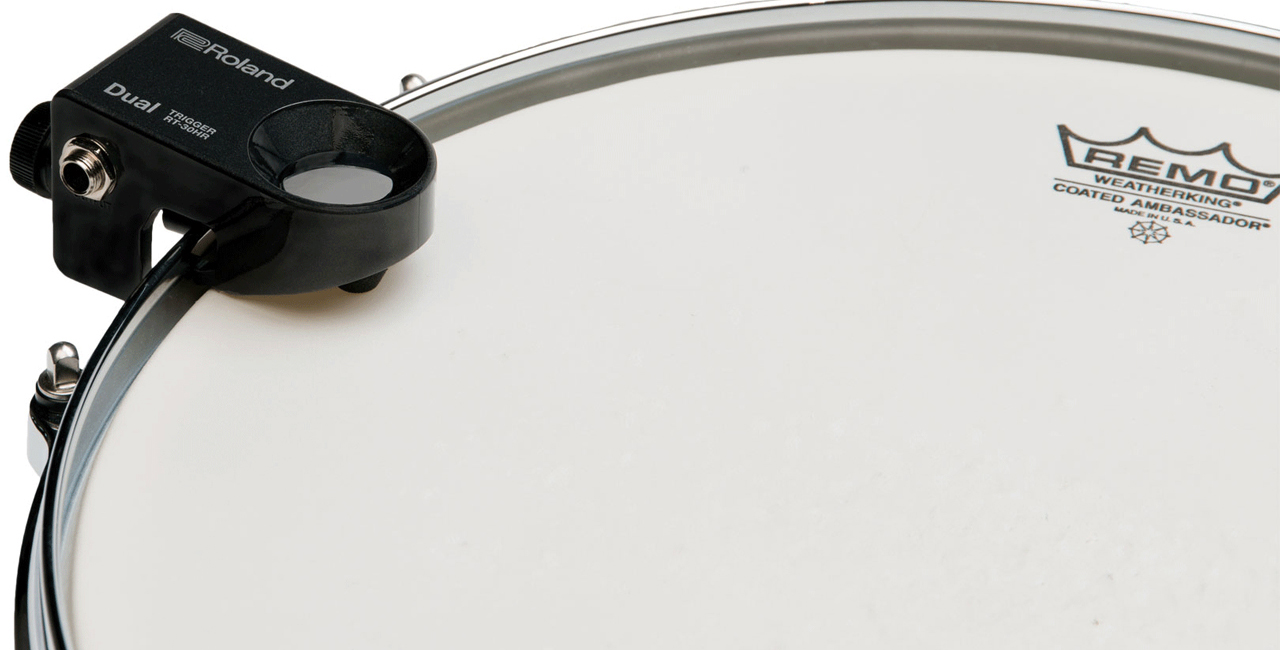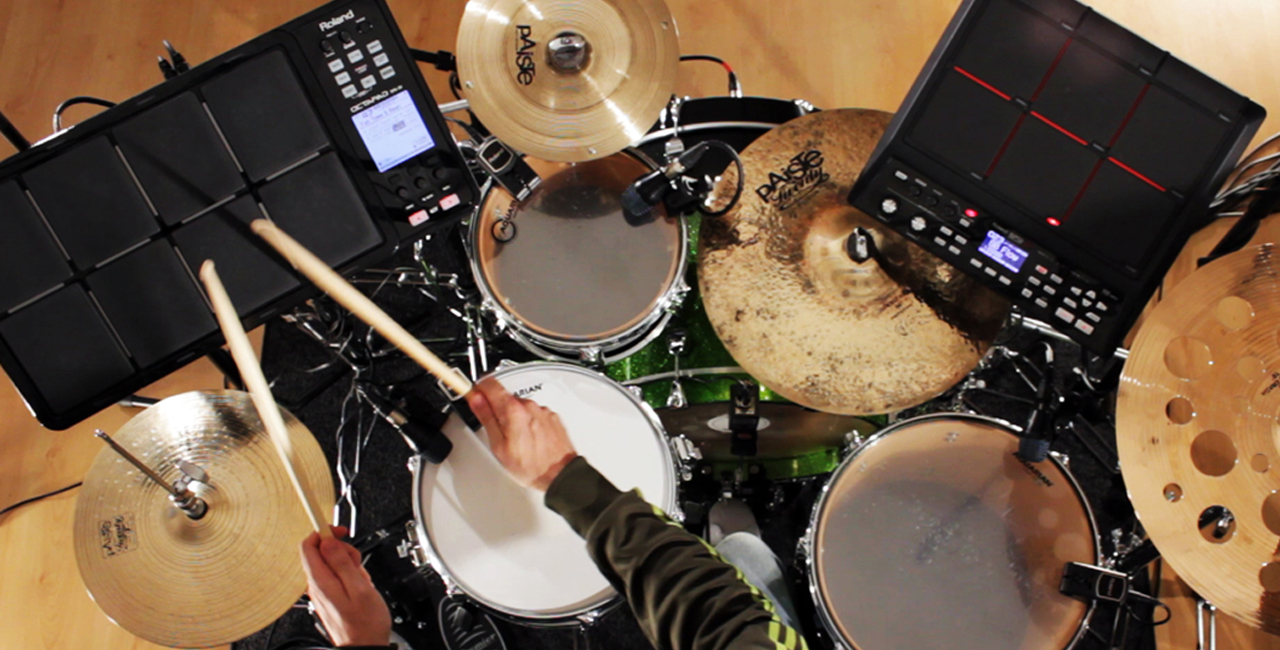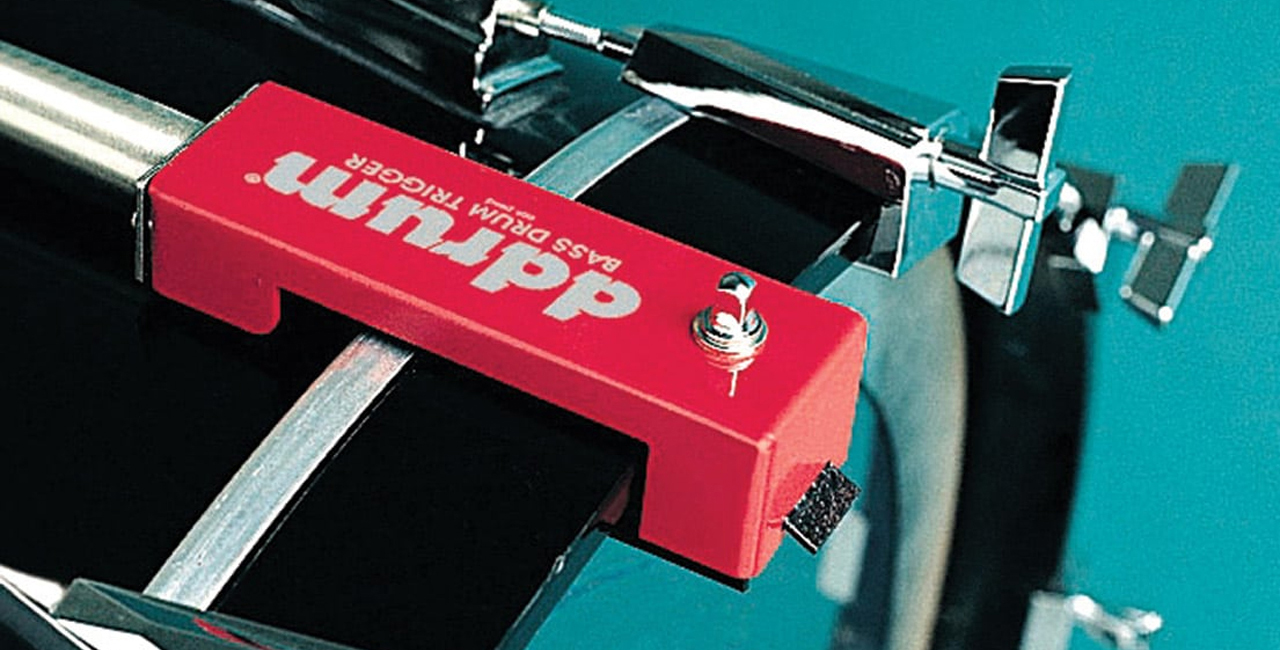While that sounds great, some drummers just love their traditional kits too much. There’s nothing wrong with that, we understand the struggle! However, if you’re an acoustic aficionado that is keen to break the mould, drum triggers enable you to use electronic sounds and samples in your playing.
Letting you form a hybrid kit, triggers are simply small devices that are attached to drum shells. Their built-in sensors pick up the vibrations of a shell when it is struck, which sends a signal to a connected drum module or sampler to produce a sound. Triggers are also used for studio recording, where samples can be layered on top of a captured drum performance to give it a crisper and more powerful sound.
In this article, we’re going to dig into far more detail and explain the full features of these options. Not only that, but we’ll also list the pros and cons of electronic drum kits and drum triggers.
Electronic Drum Kits

The popularity of electronic drums has grown exponentially over the years. While earlier kits couldn’t provide very authentic sounds, today’s setups boast detailed and meticulously-captured real drum samples. Powered by intuitive drum modules, these not only give you a range of different percussion sounds but even allow you to fine-tune your tones and save them as presets. With so many virtual kits at your disposal, electronic drums are very versatile.
But, what do electronic drum kits feel like to play? Fortunately, many modern examples sport mesh heads instead of basic rubber pads. These innovative drum heads are more responsive to your playing dynamics, and offer the stick bounce that you’d expect from acoustic skins. Thanks to these, even drummers that are accustomed to playing real kits can feel comfortable on electric drums.
Today, electronic drum kits are produced by some of the biggest brands in the business. Roland arguably remains the class leader, and has been at the forefront of electronic drum design for over two decades. With their pioneering V-Drums technology, the company’s TD series is still considered by many as the industry standard.
Yamaha is also a reputable brand in the world of electronic drums, boasting a vast range that spans from affordable to pro-grade. Alesis are highly-regarded too, and even though some people view them as budget brand, their products represent excellent value-for-money.
Pros of Electronic Drum Kits

Compact, Quiet & Low-Maintenance
Owning a full acoustic kit isn’t feasible for many people these days, especially for those that live in built-up areas. Their volume and size isn’t exactly ergonomic, which is why electronic drum kits are seen as such great alternatives. They are quieter, more space-friendly and far easier to set up. They also don’t require tuning, making them much simpler to maintain.
With a compact and lightweight design, electronic drums can be efficiently placed in the corner of a room and broken down to their components with relative ease. This makes them very straightforward to transport, which is definitely something that gigging drummers should be mindful of.
Easy to Tame in a Live Context
Speaking of playing live, electronic drum kits aren’t as synonymous with performance as their acoustic counterparts are. The obvious reason for that is their volume, which is an area where acoustic kits can really shine. However, there are actually many benefits to using an electronic drum kit in a live scenario.
For example, ‘quiet stages’ are becoming the norm these days. This is because excessive volume for performers can cause hearing loss and fatigue during long sets. A noisy stage can also disturb the clarity of a mix, as the sound of other instruments can spill into other microphones. Acoustic drums are usually the main perpetrators, but with electronic kits you can completely eliminate this issue. That’s because you can send the output(s) from an electronic kit directly to a mixing desk, and play its audio through a house PA system.
In other words, you have complete control over the volume of an electronic drum kit. Rather than raising the level of all other instruments around the volume of an acoustic kit, with an electronic setup you can easily mix and EQ its sound along with everything else.
A Useful Studio Tool
Lastly, most expensive electronic kits will feature a MIDI output. If you’re unfamiliar with MIDI, it is essentially a digital language that musical instruments use to interact with one another. Compatible devices are able to send or receive commands, to make patch changes for example. This is why MIDI is particularly useful in a live context.
However, MIDI is very beneficial for recording drums too. A MIDI-enabled kit can send commands/info to recording software (like Logic), meaning that it’s possible to capture a digital version of your performance in real-time. Therefore, if you have a drum sample library plugin like EZdrummer, you can alter the sound of your performance in post-production.
Cons of Electronic Drum Kits

Although some manufacturers fit their electronic drum kits with mesh heads to compensate for the loss of stick bounce, some drummers still dislike their artificial feel. High-end mesh pads can even feature multi-layer sensors, to accurately produce a sample at the played velocity. But despite that, their synthetic material just doesn’t do it for some purists. Electronic cymbals are usually more of a problem, as most models are sealed in rubber – even on high-end kits.
The sounds from electronic drums kits can also seem quite fake, particularly on more affordable options. Rather than sounding like a full-fledged acoustic drum kit, some can sound like a cheap drum machines from the ’90s. For the majority of players, sound is just as important as feel when it comes to electric drum kits.
While MIDI outputs are featured on more equipped electronic kits, cheaper alternatives can lack them. Therefore, if you’re looking to use an electronic kit for recording with, finding one with MIDI functionality is a must. Always check the specifications of the module, as this is where the connector will be installed.
Affordable kits will also typically feature single/stereo audio outputs, rather than an output for each component. Although most modules allow you to adjust the levels of each aspect of your kit, for a live sound engineer it can be a headache, as having the ability to individually control their volumes from a mixing desk is preferable.
Drum Triggers

You can affect the way that a traditional drum kit sounds by tuning its heads to certain pitches or using dampening. Even though you can adjust them to a certain degree, you can only go so far. And ultimately, you are limited by the components that form your kit.
Triggers, on the other hand, let you unlock the full potential of your drum kit. They can essentially turn any acoustic setup into a hybrid, enabling you to combine traditional drum tones with sampled digital sounds.
So, how do drum triggers work? Basically, they are compact electronic transducers that are usually clamped onto the edges of drum shells. Triggers will typically feature sensors, which can detect the vibrations of a shell when it is hit by a performer.
When the trigger identifies a strong enough vibration, it will send a signal to a connected module that can play either a pre-recorded drum sample or something unconventional, like a hand clap sound. This is why drum triggers started to gain popularity in the ’90s, amongst heavy metal, dance and pop drummers in particular.
Pros of Drum Triggers

Broaden Your Sonic Horizons
As we’ve described, drum triggers bring more variety and versatility to a basic acoustic drum kit. By forming a hybrid setup, you can experiment with sounds that were previously unattainable, letting you enhance your performances with more interesting soundscapes.
In essence, triggers bridge the gap between acoustic and electronic drums. They enable fans of acoustic kits to enjoy the sound and feel of their traditional shells, while creating an electronic ‘double’.
Enhance a Live Drum Sound
However, drum triggers aren’t strictly used to produce electronic sounds. They’re also used to play pre-recorded drum samples that can add definition to the existing sound of an acoustic setup. This is a technique commonly employed by metal players, allowing them to cut through more easily in a frantic mix.
The kick drum is the most typical shell to trigger, as in a live context it can often sound muddy when mic’d up. The trigger can therefore activate a tighter-sounding kick drum sample, with more mid-range punch. Metal players that use double-kick pedals particularly enjoy this method, as fast patterns can be heard more precisely.
Give Recordings More Clarity
Likewise, triggers are also used in studio recording for a similar reason. In modern music production, it is common practice to layer pre-recorded samples on top of a captured drum performance. This is so that a crisper and more powerful sound can be achieved. For example, if it becomes apparent during the mixing phase that the mic’d snare sound is getting buried by other instruments, a sample can be added to give it more sonic potency.
Sophisticated drum triggers can also send MIDI information to a DAW in real-time, or via an electronic drum module with a MIDI output. In this instance, if the mic’d recording of a drum performance is so bad that it cannot be used, a drum sample plugin can be employed as a ‘last resort’ alternative. This method also makes it easier to experiment with drum sample layering in post-production.
Cons of Drum Triggers

Drum triggers, for the most part, are great. However, they have their downsides too. Although modern examples are less susceptible to this issue, drum triggers can sometimes set off false signals that are caused by the vibrations of other shells. As drum shells resonate sympathetically, isolating them can be very difficult and therefore this problem can arise. Having said that, some triggers can have their sensitivity adjusted to help prevent this issue.
Apart from producing unintended samples, drum triggers can also suffer from poor latency. This is where a trigger’s sensor is too slow to react to the vibrations caused by a drum strike, meaning that the signal it fires is several milliseconds behind the initial hit. Again, this is an issue often attributed to older drum trigger models. Nowadays, bad cabling will be the biggest cause of latency.
The placement of drum triggers can also be problematic for some drummers. Despite typically being mounted to the edge of a shell, they are still fairly prone to being struck by accident. More expensive drum triggers generally have a metal enclosure, to ensure that they are more robust. However, cheaper triggers can have plastic casing, which is more likely suffer damage if hit inadvertently.
Lastly, some purists consider the use of drum triggers as ‘cheating’. This is mostly because of their association with modern music production, as they allow drummers to add or replace a mic’d drum sound with a sample. Some traditionalists also believe that triggers kill the dynamics and articulation in one’s playing, and sound “like a machine”.
Want to learn more?
Interested in finding out more about music gear and expanding your knowledge? Click here to view all of our Labs articles!









Responses & Questions